The little church will withdraw into greater unobtrusiveness. Whereas not so long ago its stone cross could be seen from the central avenue of the town, signifying its presence to passing visitors, a large building recently erected is now camouflaging it more. With the nuns gone, silence will set in. The church bell will no longer ring at Easter or Christmas. The font at the entrance to the building is empty, as is the tabernacle, and only the glow of the sanctuary lamp still shines, preserving the notion of a sacred presence.
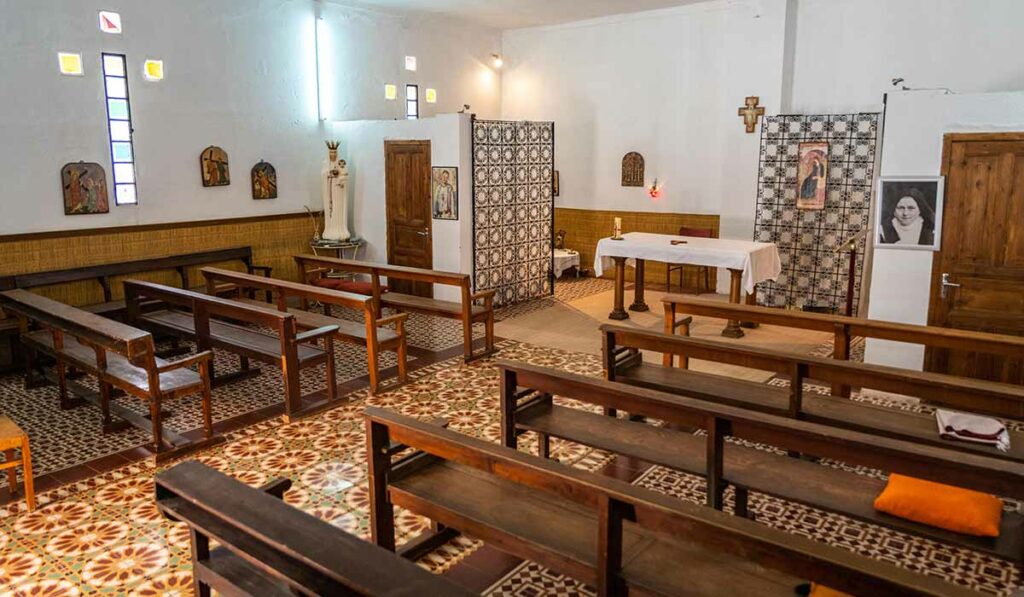
The fruits of the French presence in Ouarzazate
The church was built in 1931 by legionaries of the French army, part of the French Protectorate in Morocco. Three years previously in 1928, the first soldiers under the leadership of Lieutenant Spillmann had been installed at the top of a small hill just several hundred metres from the ksar of Taourirt, where the representative of Si Hammadi el Glaoui, the Pacha of Marrakech, reigned supreme. In 1931, Ouarzazate, still in its infancy, was officially established as an administrative centre to all the villages of a vast surrounding area; from Telouet and Taliouine to Foum Zguid and covering the Dades and Drâa valleys, thereby establishing its de facto control over all the numerous tribes that had lived there for centuries.
The Franciscan almoner of the Foreign Legion, Father Bonaventure Hermentier, settled down in the area and organised religious activity for the military and, above all, for the large number of European residents and their families who had come to settle throughout south-eastern Morocco, currently engaged in a frantic synergy of development.
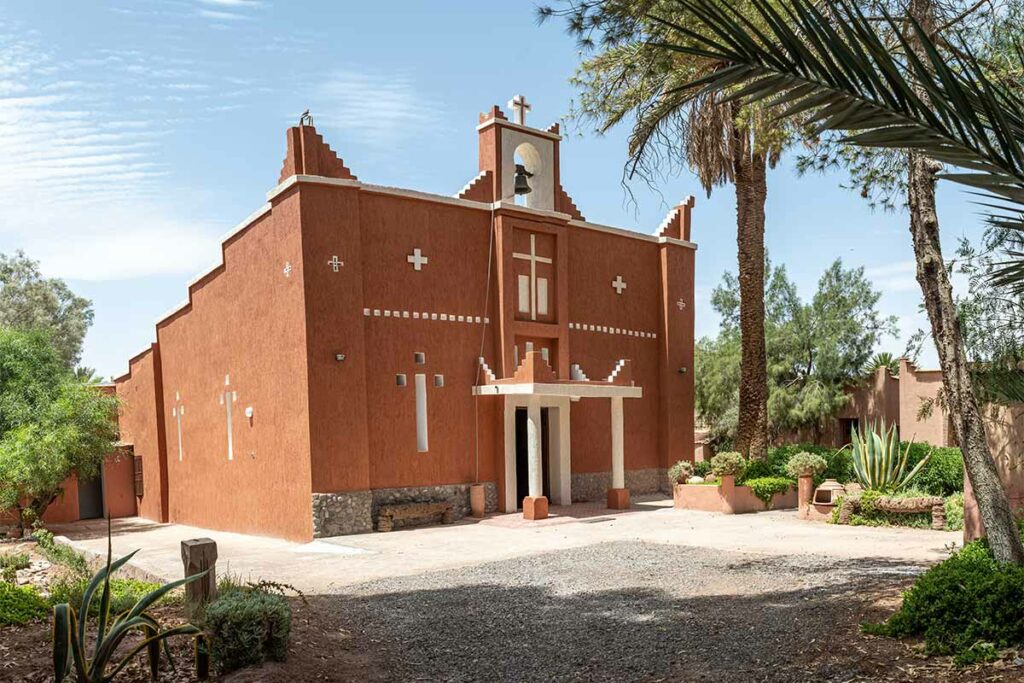
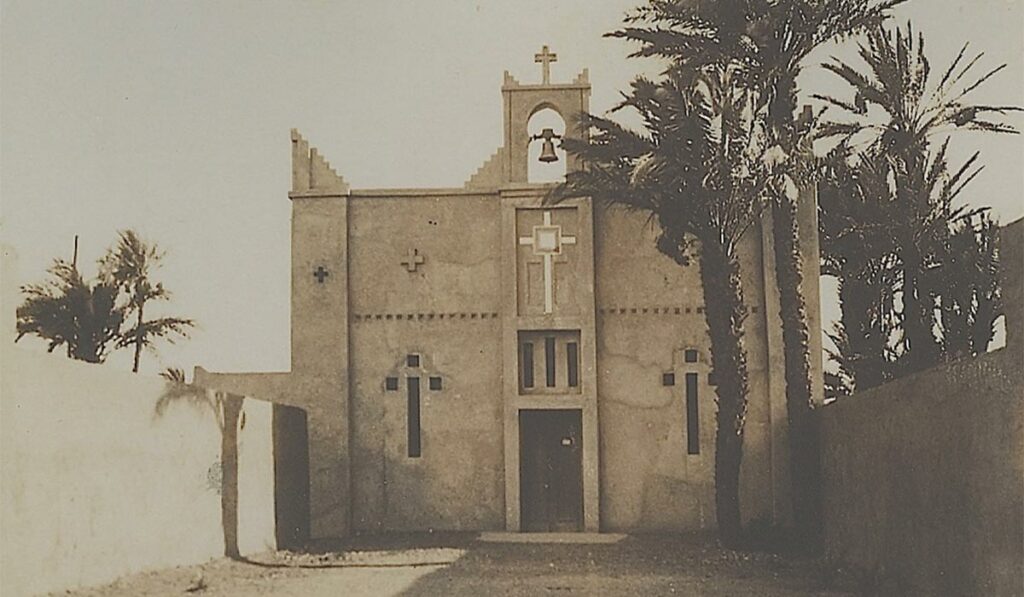
The spirit of Francis of Assisi soars over Morocco
The presence of the Franciscan Order in Morocco dates back to the 13th century with the arrival of a first group coming to preach the Gospel to the Moors. Barely 10 years after having founded a religious order known as the Minor Friars, Francis of Assisi, still under the spell of his meeting with Sultan Abd-al-Malik in Egypt, who was under siege from the Crusader armies, decided to send a small group of his followers on an adventure that was as daring as it was incongruous, since it ended with the imprisonment of the monks as soon as they arrived, and with their execution in Marrakech in 1220.
Over the years having laid their proselyting aside, the Franciscan missionaries, faithful to their vows of fraternity, never ceased to come and settle in Morocco in order to bring assistance and comfort to Christian prisoners, as well as to poor and destitute Moroccans.
In the 19th century, the Franciscan, Jose Maria Antonio Lerchundi, became famous when he published a book in the Moroccan dialect. It marked the beginning of the opening of a number of schools and health centres in Morocco, based on a conviction irrevocably shared by all his fellow Christians:
« It is a matter of loving this people to the point of believing in them, even though they frequently despair of themselves »
José Maria Antonio Lerchundi
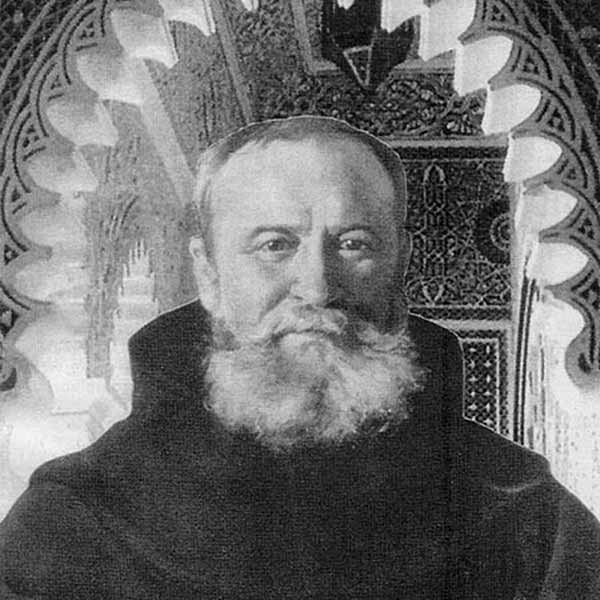
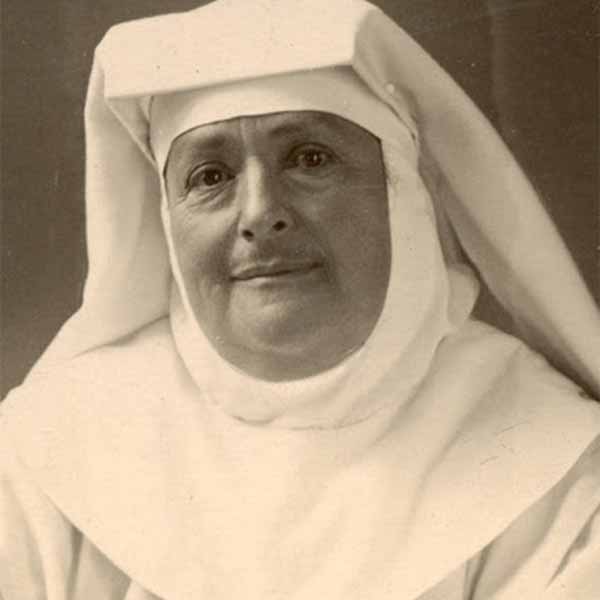
The commitment of women in the service of this fraternity
So it is perfectly natural that a congregation of religious women, structurally attached to the Franciscan order, should come to Morocco in order to follow this mission of benevolence.
And so it is in this same spirit that in 1912 the first groups of Franciscan missionary sisters of Mary arrived in Morocco following the signing of the Treaty of Fes in the March of the same year between Moulay Abd el Hafid and the representatives of the French government, establishing what would become known as the French Protectorate in the Cherifian Empire.
This religious congregation came into being in India in 1877 at the incentive of a French nun from Brittany, Hélène de Chappotin de Neuville, better known as Sister Mary of the Passion. She dedicates her new congregation to the service of the poor and on her death in 1904 86 communities of sisters in almost 48 countries are opened. But it is at the instigation of the Second Vatican Council of1962 under Pope John 13 that innumerable Catholic congregations were sent throughout the world following the advocacy of openness and encounter with the poorest and the neediest.
And the congregation of the Franciscan missionary sisters would continue to follow this movement until at the height of its commitment it was present and active in 76 countries.
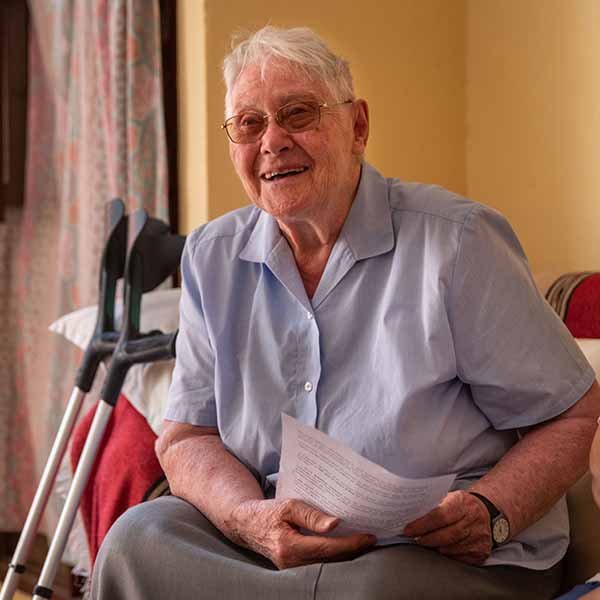
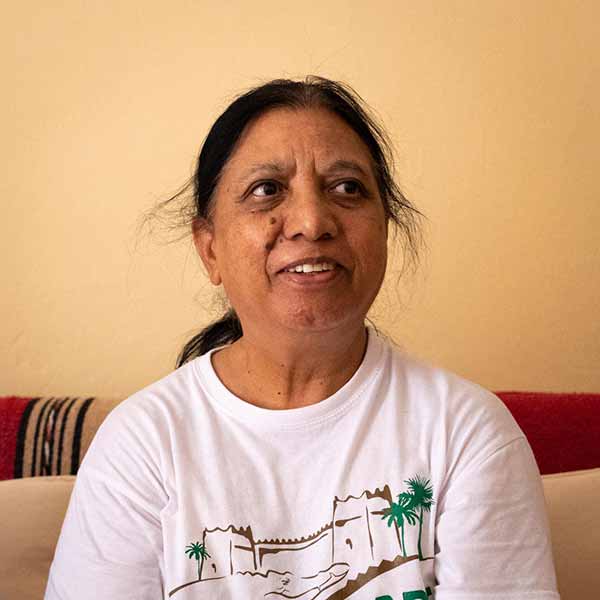
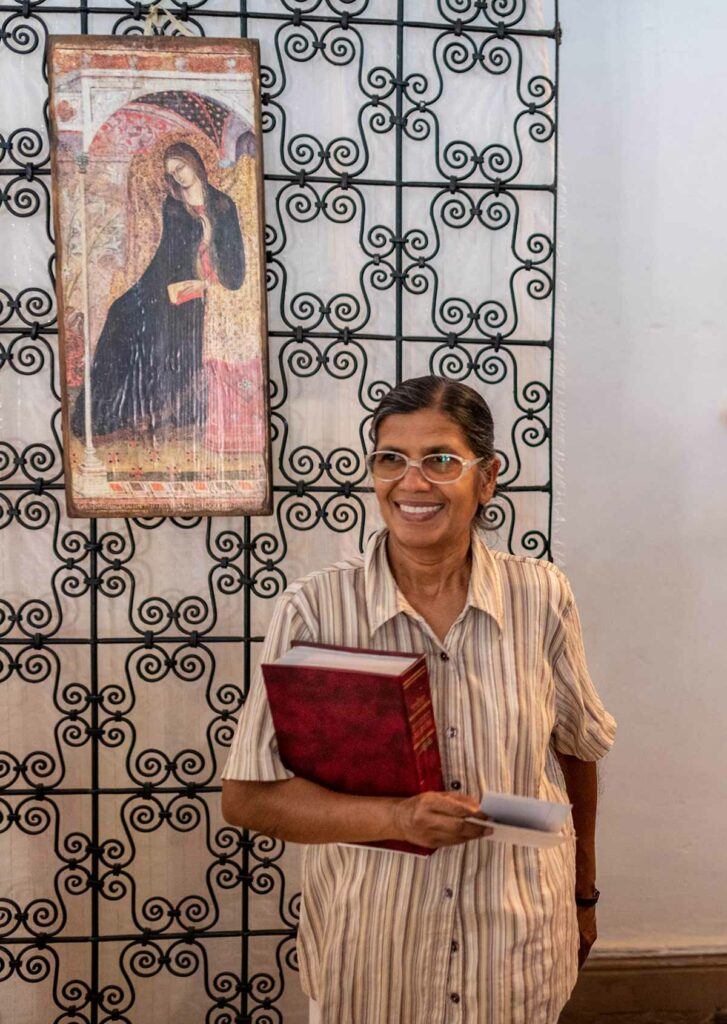
In Ouarzazate close to the population
Very rapidly, 22 establishments in Morocco were set up first and foremost to allow the inauguration of a health system capable of responding to the needs of the population, and equally quickly opening a number of schools providing instruction to Moroccan children and young people.
In 1973, the Ministry of Public Health of a now independent Morocco instructed the organisation to send its nursing sisters to Ouarzazate. Three of them, who had been posted to Fes, Sister Gabrielle, a Frenchwoman, as well as two Spanish sisters made the journey in order to assist their Moroccan brothers there.
They form a first group of nurses at the Sidi Hssain hospital. And throughout the sisters’ stay, the community would become involved in responding to various needs arising. There were teachers at the new school for the training of nurses, or like Sister Colette in public education giving maths lessons at the Crown Prince’s high school, now the Mohammed VI high school. There were kindergarten teachers and social workers for orphaned children or the most disadvantaged such as the disabled. There was vocational training for women in sewing, embroidery and carpet weaving.
From 1971 onwards, a community of friars in the region of Agouim was strengthened by another new foundation. This Franciscan missionary community of Mary included Sister Lucy, a nurse who spent her time on the road attending births and providing care. Another dynamic sister, Sister Huguette, with a university degree in biology and who cultivated saffron, opened a cheese factory that is still in operation today, and also began training farmers.
Other establishments were created in Errachidia, Goulmima, Midelt, Ighrem Nougdal.

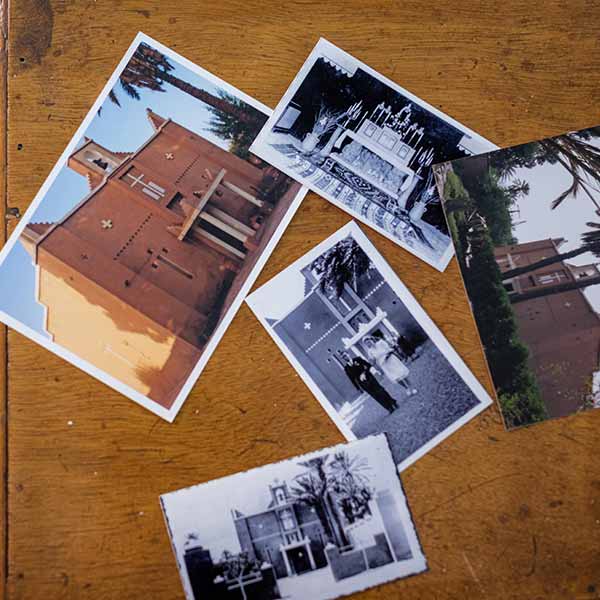
Sister Francesca – tenacity in supporting the town’s growth
Sister Francesca Maria Leonardi, a trained social worker, arrived in Ouarzazate in 1979 and dedicated herself to respecting the instructions of her antecedent, the Franciscan José Maria Antonio Lerchundi, who appealed to the members of his congregation in Morocco to:
« Be the one who loves and cares for that which is growing. »
José Maria Antonio Lerchundi
More than anyone else, she marked the 27 years of her time in Ouarzazate through her personality and her capacity to both initiate and complete major social development projects thereby ensuring that assistance to the most disadvantaged could be sustainably organised.
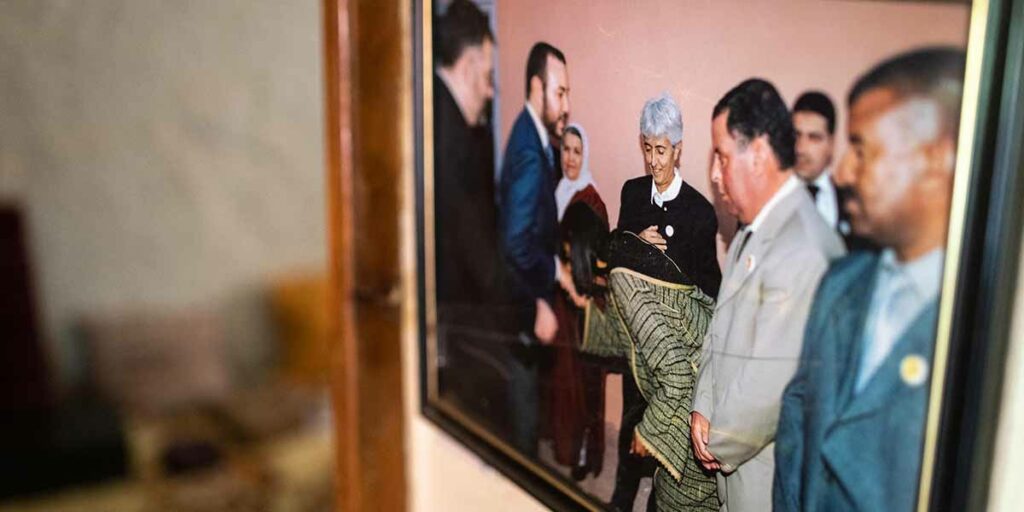
For this reason, she instigated the creation of the association Horizon des Handicapés, which was the first organisation anywhere in the southern regions of Morocco to support disabled people and their families. The association still exists today and has received recognition in its task of service to the public. Sister Francesca later founded the Achourouk association to serve deaf and dumb people, the Oxygène association to support the professional integration of young girls, and finally the Amnougar association to ensure the professional training of young disabled people in the jewellery, carpentry, sewing and agricultural trades.
Idir Ouguindi knew Sister Francesca well. He assisted her in setting up the Horizon des handicapés association together with Pierre Katrakazos, the current president of the association. Today he shows his deep regard for this extraordinary person who has earned a place in the history of Ouarzazate:
« The generosity with which Sister Francesca shared her knowledge is proof of her commitment to the lives of others. In addition to her enduring presence, she will have been a true mother to all those who frequently made use of the social services at Bougafer Hospital in Ouarzazate. Sister Francesca is full of a sincere desire for love and peace »
Idir Ouguindi
A page is being turned, a world is disappearing
The evolution of human societies has brought with it the disappearance of such lives as these, dedicated to the service of others. From year to year, religious vocations have been decreasing in number and now with fewer nuns available, the congregation has been obliged to close its establishments right across the world.
In Morocco, the community in Agouim left in 2001, followed by those in Errachidia and Ighrem Nougdal in 2008. The group in Taroudant closed in 2012. After the departure of the sisters from Ouarzazate, just four establishments will be left in Morocco; in Casablanca, Rabat, Meknes and Midelt.
It is now planned for a French couple to join the church of St Theresa in Ouarzazate soon, with the intention of receiving all those who wish to be welcomed to the chapel, and for those who wish to preserve the traces of the past which are gradually disappearing.
Memories live on in the hearts of several of Ouarzazate’s population; the nurses trained by the sisters, among the handicapped who received their support, the orphaned children who were able to grow up under better conditions thanks to the sisters’ devotion, and all those young women and young people who also benefitted from their presence and their attention.
In the service of others – everywhere and for ever
Each of the three sisters will set out with just a small amount of luggage. They are instructed always to leave everything of their various assignments behind them. They have become accustomed to having no personal belongings, apart from what they require for daily life. They feel at home everywhere, and are welcomed by the local populations, who have come to love them, like here in Ouarzazate, where they have propagated their devotion to their fellow man.
Sister Marie Joseph, born in Morocco, worked in Russia before taking care of the community in Taroudant for 18 years. She will now be based in Casablanca.
Sister Rozy, born in India, served in Libya, then India, in Tunisia and finally in Nador where she supported migrants until 2019.
Sister Angela, also born in India, came to Ouarzazate in 2002 to replace Sister Francesca. In a few days from the time of writing, she will get ready to go to Algeria to continue her mission there.
The Franciscan sisters of Mary have left. A page has been turned for ever. All these women, their faith firmly anchored in their hearts will, at one time or another, have decided to be the ones who love and take care of the growing Ouarzazate.
Translated by : Felicity Greenlaw / Desert Majesty
Erratum:
Sister Mary Joseph wishes to correct the statement concerning the church in Ouarzazate.
« The sisters are no longer in Ouarzazate; but the doorbell and all telephone calls will still be answered. In fact, a retired couple, formerly caravanners, have been hired by the Bishop of Rabat and will be living there as from September. In addition, a priest from Paris, resident in Ouarzazate, will conduct the Sunday services and those of the major festivals.»
Latest information :
A commentary has been posted by the people who will soon be coming to take care of the church in Ouarzazate.
« We are the French couple who have volunteered so that this wonderful site of Ouarzazate and its incomparable history can continue its mission. With the help of a priest living in Ouarzazate, the church will be open to everyone and at all times.
Our thanks go to our bishop Cristobal, who granted our request to maintain the Catholic presence in Ouarzazate.
Our arrival planned for May has been delayed by the pandemic but our will remains intact, and we look forward to being part of this great Moroccan family.
Thérèse and Daniel Le Scoarnec
Photo credits : Abdellah Azizi / azifoto.com
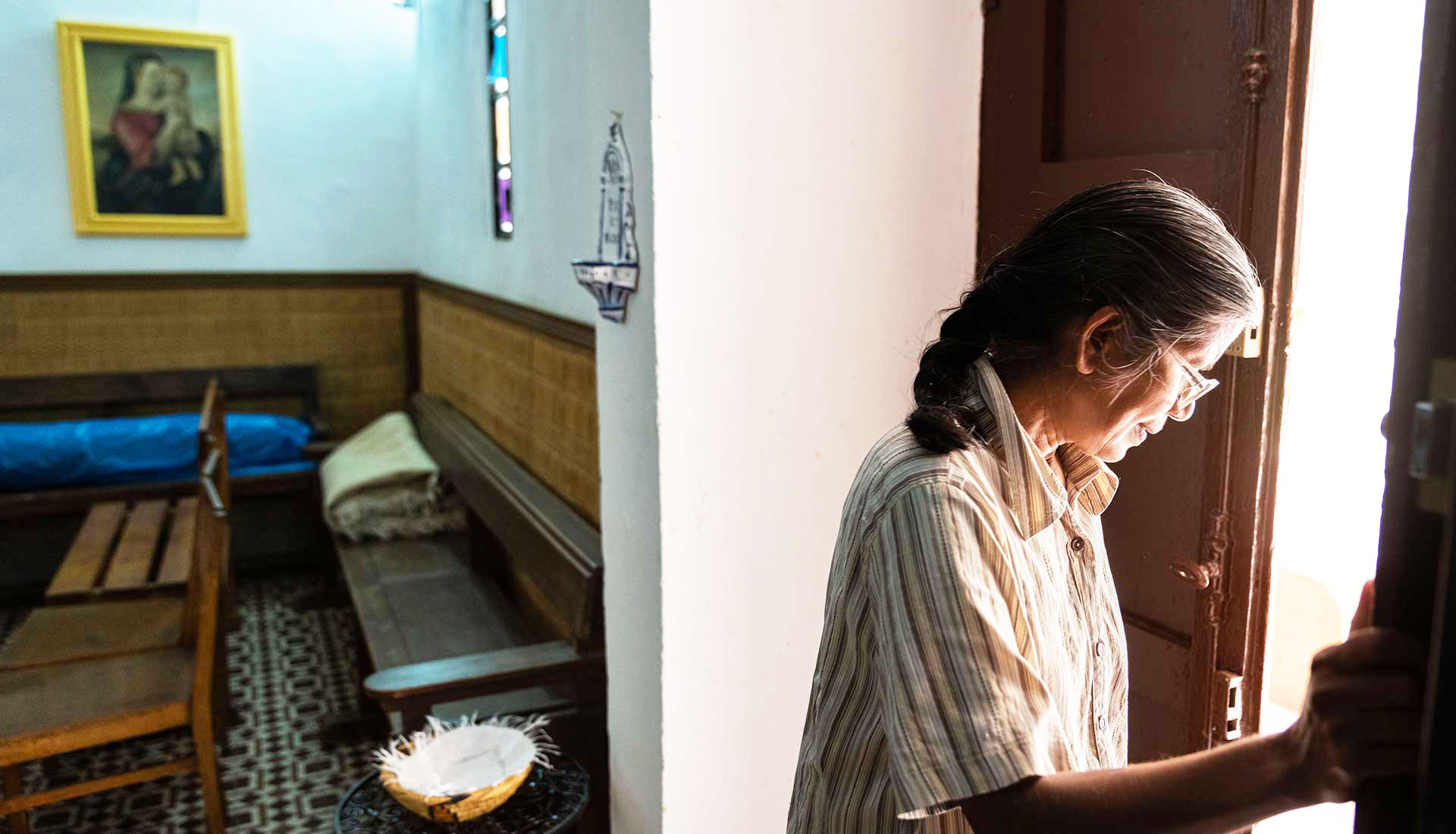

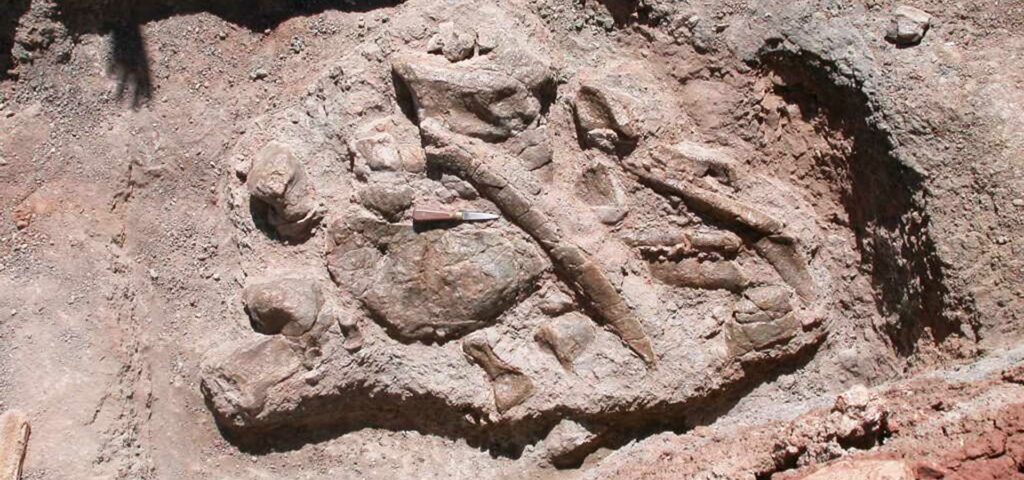
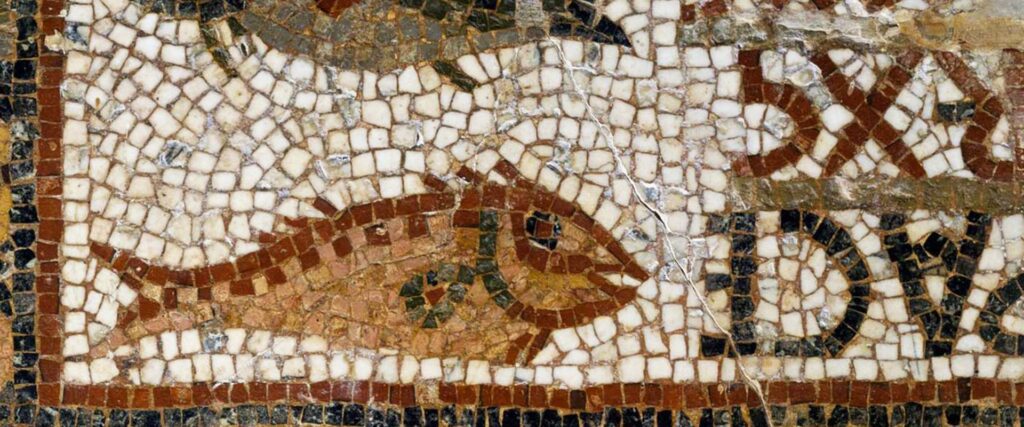
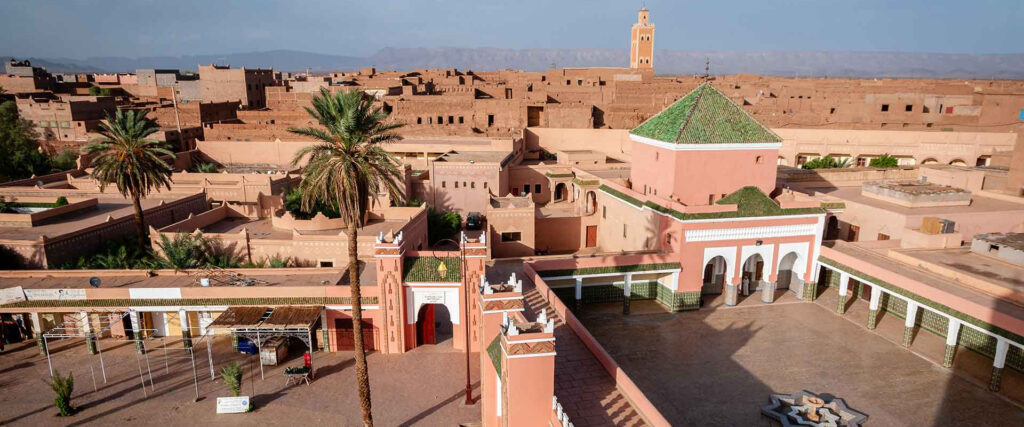
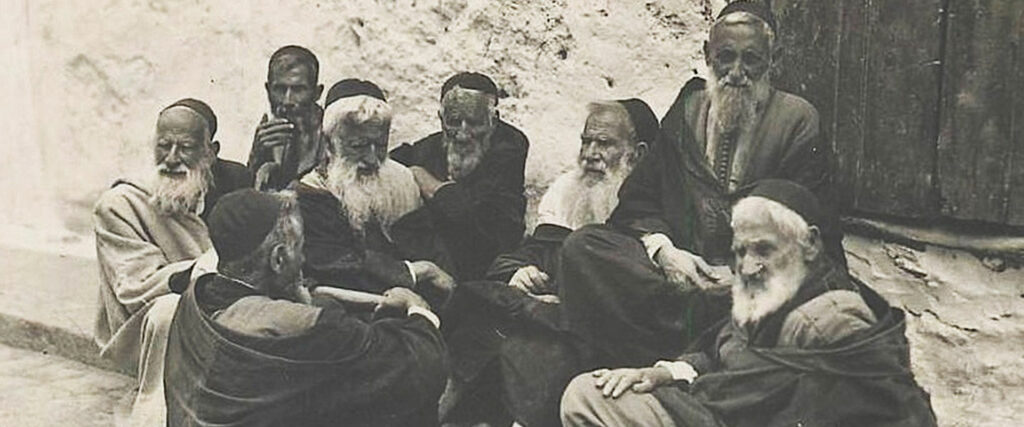

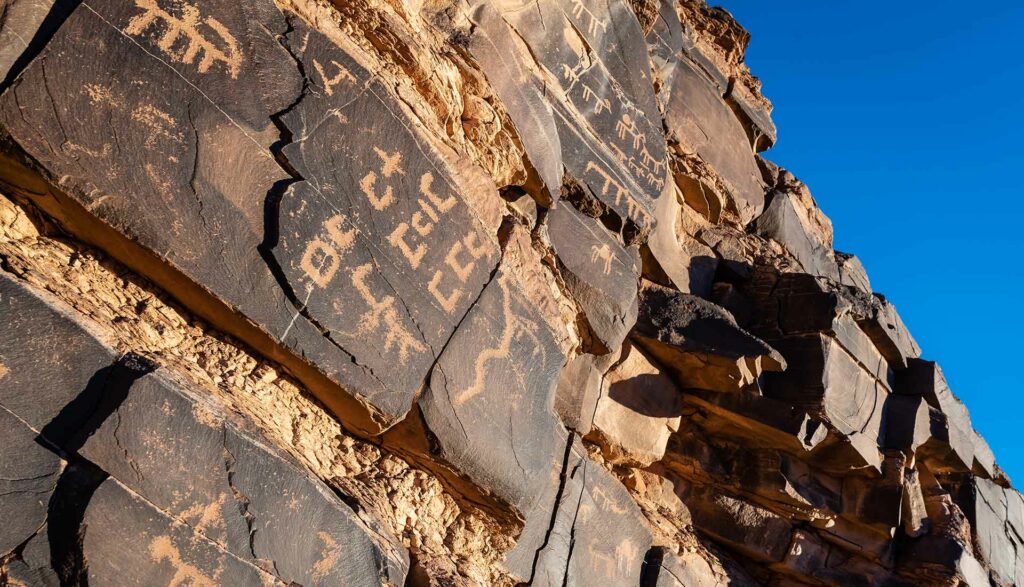
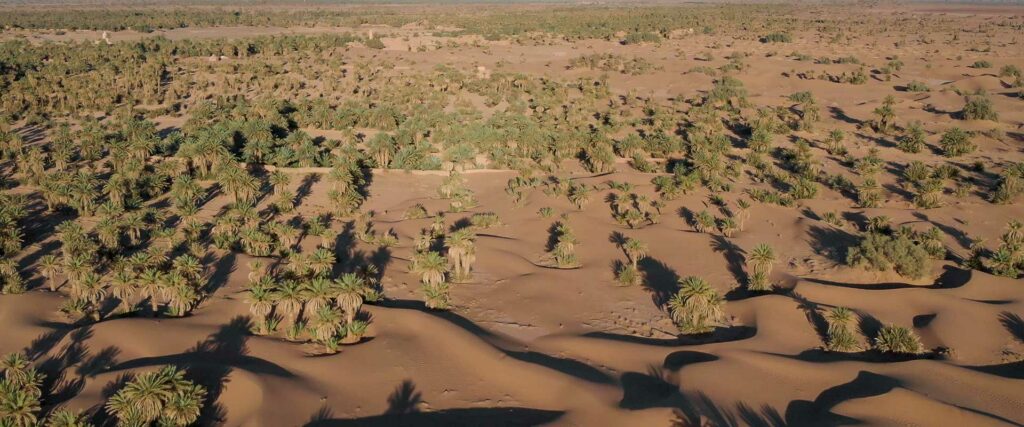

2 Responses
My respects and gratitude to the sister who was my math teacher in the late 1980s at Ouarzazate High School.
Thank you, Eric, for your testimonial article about the Franciscan sisters and friars of Ouarzazate. It marks the end of nearly a century-long chapter.